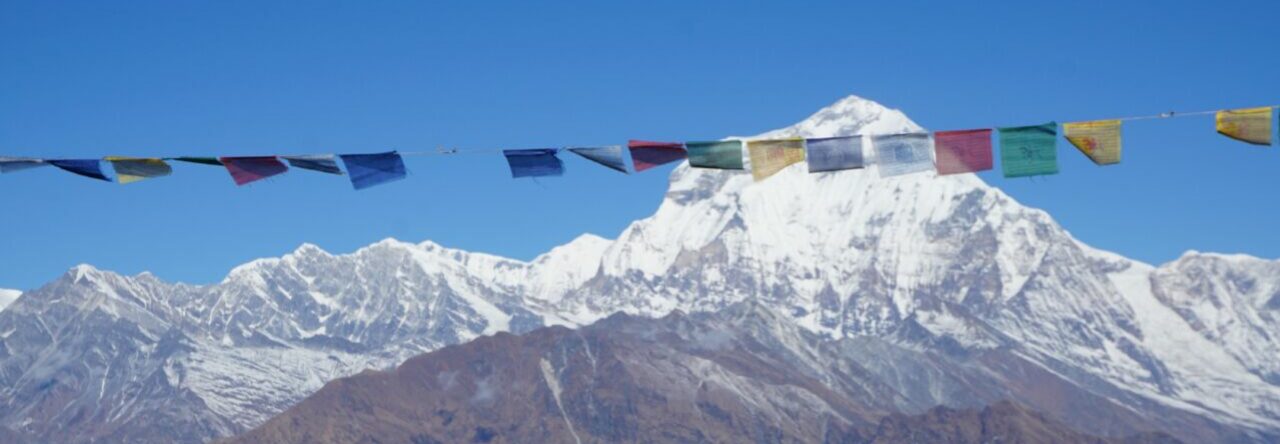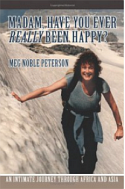
I never tire of the morning view from my tent. And I’m never sure whether I’ll be greeted by a horse, a sheep, a sunrise, a panorama of looming mountains, or all of the above. But I do know one thing…it will be peaceful.
On our way to the first stop of the day, a family ger, we passed the winter camp I had seen the day before on my hike, and enjoyed interacting with a local herder.
 This prompted a long discussion about the history of wild horses (the most famous one, the Przewalski, is being re-introduced into Mongolia) and the present-day practice of capturing a horse, breaking him, and sending him into a “pack.” The pack will decide its territory, but it has to be within the area allotted to that particular herder and his family. This system of organization is not strictly legal, but has been decided upon over the years by the various families. Packs of horses have one stallion and 20-30 mares.
This prompted a long discussion about the history of wild horses (the most famous one, the Przewalski, is being re-introduced into Mongolia) and the present-day practice of capturing a horse, breaking him, and sending him into a “pack.” The pack will decide its territory, but it has to be within the area allotted to that particular herder and his family. This system of organization is not strictly legal, but has been decided upon over the years by the various families. Packs of horses have one stallion and 20-30 mares.  There are also some geldings, mostly ones that the herders or racers ride. You geld a horse when it reaches horse puberty…age four. We were to see many such packs, several of them standing with their heads together, reminding me of a football team in a huddle.
There are also some geldings, mostly ones that the herders or racers ride. You geld a horse when it reaches horse puberty…age four. We were to see many such packs, several of them standing with their heads together, reminding me of a football team in a huddle.
Just over the hill we spotted a group of gers. What a delight it was to be ushered into the large round room and treated to milk tea, pressed yogurt, various kinds of goodies made from yogurt, real yogurt, and, sometimes, popcorn.
A typical ger is covered with two layers of canvas with an insulation layer of felt. It can be taken apart in less than an hour and moved to a different location…south in the winter and north in the warmer months. It is supported by a collapsible wooden frame and ropes made from horsehair and cinched around the perimeter to hold it together. The use of gers is still very much a tradition in central Mongolia. You can see why. They are useful and incredibly versatile.
We moved to the ger next door and were shown where vodka was made from yak yogurt. Drying curd hung from the ceiling A motorcycle was parked outside. Some herders use them instead of horses. Notice the sheep’s head on the back, probably for dinner.
We had already been introduced to Mongolian hospitality and kindness, so it was not a surprise when Algaa slowed down and stopped by the side of the road to help another motorist in trouble. This happened twice in the next two days and both times he knew the driver…one a relative and another his best friend. Small world. Each time he assisted them it gave us a chance to chat with the clients and swap stories from such places as Germany, California, France, and Holland. These exchanges are one of the reasons I so enjoy travel in faraway places.
Algaa was a character, indeed! He usually dressed in pants and an undershirt, or on the hot days, no shirt at all. He was a phenomenal driver and could talk on his cell phone while negotiating the most arduous “roads.” His van was his baby and he cared for it each day, washed it in the streams, and kept the inside spotless. He even slept in it. And his sense of humor was one of his most endearing qualities.

 The annual Naadam Festival across the vast grasslands of Mongolia is held in every village and city on the 11th and 12th of July, coinciding with Independence Day. It’s a colorful spectacle when competitors show off their skills in wrestling, archery, and horse racing.
The annual Naadam Festival across the vast grasslands of Mongolia is held in every village and city on the 11th and 12th of July, coinciding with Independence Day. It’s a colorful spectacle when competitors show off their skills in wrestling, archery, and horse racing.
Everyone in town dons the finest apparel (del, meaning traditional cloak) and congregates out of town. Bogie was lamenting the fact that it used to be so much better when everyone came by horseback, but now shiny new cars are crowded everywhere and spoil the atmosphere. (Cars are much cheaper in Mongolia than the west due to the economy.) At 29 he’s already sounding like us old folks!
It was lunchtime when we arrived outside a small town near the Tarjat River, and a race was just finishing up. Horses came pounding up a wide grassy “highway,” their riders urging them ever faster by rhythmically using a gentle switch, first on their hind quarters, then on their necks. What excitement! Four-year-old horses racing over ten miles to the finish line. They kept coming even after the winners were declared and the celebration had begun. I missed out on most of the photos for lack of time, so I just enjoyed the drama and hoped I’d be present for the next finish. There’s plenty of colorful coverage on the internet.
After the race, we wandered throughout the hot and dusty fairgrounds, past merchants and individual displays of wares, and numerous tailgate parties, until we found the wrestling. Most everyone in Mongolia loves wrestling. It seems to me like the national sport….a bit like our football. During our trip nomads would join us for food or fellowship in the evenings and, inevitably, a wrestle would take place. Bogie was especially adept at this, and I have some neat videos of the men grunting and groaning and throwing each other around with great alacrity.
Here at the festival anyone from the audience who has the temerity can challenge the big guys (and they are big).
Notice the spindly little fellow in the video holding his own with an expert. You can only lose if your elbow touches the ground. It doesn’t matter how many times you get thrown or stumble. I could not believe what the human body endured that day! And don’t you love the way the winner preens and trots around the ring holding up his arms and doing a little dance? I didn’t take a video of the beginning, but it was like a choreographed circle dance with all the wrestlers waving their arms and moving their hips and bodies to the music. And they looked as if they were having a real blast.
Our time at the wrestling match was cut short by the advent of rain, so we rushed to get the tale end of another horse race. Obviously, there was no picture taking this time, because of the downpour. Drat! It was funny, however, to watch three horses neck in neck as they reached the finish line. And the winner had evidently lost his rider along the way, poor fellow. But he won, nevertheless.
We left the festival, reluctantly, and drove down a peaceful highway with rolling hills, rows of electric poles and several small villages. They were typical of others we had seen: brightly colored houses clustered or built on a hillside in tiered fashion. I found the arrangement rather touching…some in semi-circles and some lining the highway. And many with high wooden fences. The roofs were also bright colored and the design simple, rectangular, and usually one-storied. I saw no fancy or extensive landscaping. Of course, there were no villages or towns when traveling off road. Just small groups of gers.
In the late afternoon we passed a deep canyon rimmed with pine trees, through which the Chestnut River flowed. We were now in the Khorgo-Terkhiin Tsagaan Nuur National Park.

 That night we camped on the shore of Targat, the wild river. I took a hike on one of the hills overlooking our site.
That night we camped on the shore of Targat, the wild river. I took a hike on one of the hills overlooking our site.

 The next morning we stopped at a super market to buy supplies, as we did, periodically. Take your pick of languages!
The next morning we stopped at a super market to buy supplies, as we did, periodically. Take your pick of languages!
Then it was on to Tariat soum, a district of Arkhangai Province. You could see the volcanic debris on the hills en route the famous Khorgo volcano.
The volcano was quite a tourist attraction loaded with Mongolian families clambering up to the rim to get a look at the lake way down at the bottom of the crater.
As the afternoon wore on we went through another resort on the northern shore of Terkhiin Tsagaan, the White Lake. Rental gers nestled along the shoreline and tourist vans dotted the landscape. Groups of people hiked on the rocky hills.
We rode around the lake until we reached its northern shore. The terrain was rocky with small lumps called permafrost. The lumps were rocks covered with lush green grass. You had to really watch your step as you walked.
There’s nothing like a swim before dinner as the sun makes its way behind the distant hills.









































































































































